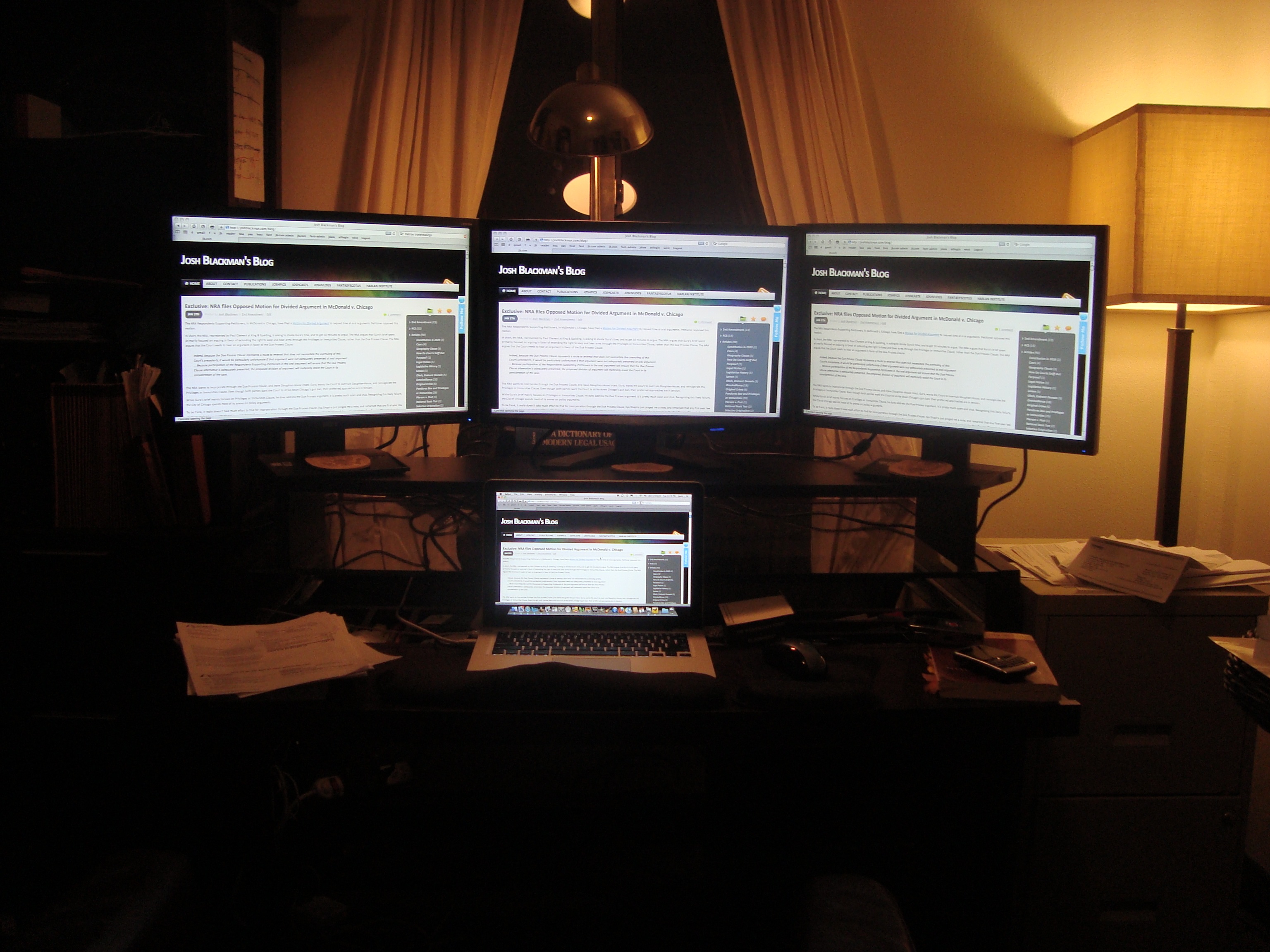 For some time now I have used four monitors. I love it. It facilitates my supertasking. Today, the Times profiles this approach to working; in an article titled, “In Data Deluge, Multitaskers Go to Multiscreens.”
For some time now I have used four monitors. I love it. It facilitates my supertasking. Today, the Times profiles this approach to working; in an article titled, “In Data Deluge, Multitaskers Go to Multiscreens.”
Certainly more people are trying. Tech firms sold 179 million monitors worldwide last year and only 130 million desktop computers — meaning “more screens per desk,” said Rhoda Alexander, who heads monitor and tablet research at IHS iSuppli. Monitors are bigger, too. The average monitor sold worldwide is 21 inches, up from 18 inches five years ago, according to iSuppli.
NEC Display, a major supplier of monitors, said 30 to 40 percent of the employees of its corporate customers now used more than one monitor, up from 1 percent four years ago.
This person uses monitors similarly to me:
Her center screen shows what she is writing or editing, along with e-mail and instant messages; the left and right monitors display news sites, blogs and Twitter feeds, and she keeps 3 to 10 tabs open on each. One monitor recently broke, and she felt hamstrung. “I don’t want to miss seeing something,” Ms. Cohen said.
Here’s how I roll:
I also have four monitors. Although this picture doesn’t demonstrate my usual arrangement of applications, here is my usual layout.
On the laptop screen, I keep my email. From left to right, the first monitor I keep Pandora, Adium chat Client, and Tweetdeck (monitoring my facebook feed, and two twitter accounts). On the middle monitor I keep my documents open, whether it is word, excel, or powerpoint. On the monitor on the far right, I keep open Google Chrome, usually with about a dozen tabs, including google reader and others.
So do multiple monitors increase productivity?
The main rationale for a multimonitor setup is that it increases productivity. But that notion is not simple to prove or measure, partly because it depends on the kind of work people do and whether they really need to be constantly looking at multiple data streams. Another theory holds that people have just grown so addicted to juggling that having more monitors simply creates a compulsion to check them.
One study, by the University of Utah, found that productivity among people working on editing tasks was higher with two monitors than with one. The study was financed with about $50,000 by NEC Display, which had hoped to find evidence that companies should buy more monitors to increase productivity. (Other tech companies also promote multiple displays — one Hewlett-Packard ad declares that “two is better than one.”)
The author of the study, James A. Anderson, a professor of communication, said he had not been influenced by NEC’s financing. He said he uses three monitors himself, but also said that it was hard to generalize about whether more monitors are better.
At the very least, Professor Anderson said, more monitors cut down on toggling time among windows on a single screen, which can save about 10 seconds for every five minutes of work. If you have more than one monitor, he said, “You don’t have to toggle back and forth. You can take in everything with the sweep of an eye.”
Yes, toggling, even if it takes a second, is time wasted. My eye truly can just sweep from side to side to side. I know where to look for certain information. It becomes so intutiive.
The Times talks to another expert who finds multitasking bad:
David E. Meyer, a psychology professor at the University of Michigan whose research has found that multitasking can take a serious toll on productivity, said he buys the logic about toggling. But he also warned that productivity can suffer when people keep interrupting their thoughts by scanning multiple screens rather than focusing on one task.
“There is ‘thought-killing’ going on,” Professor Meyer said. “Rome crashed and burned because it got too big. Go past that scale and you’re going to wind up like Rome.”